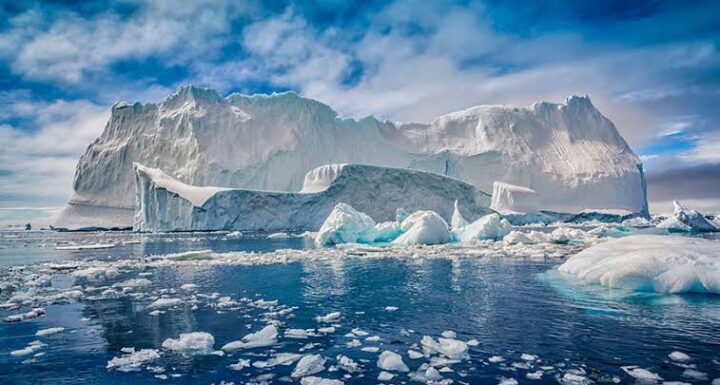The wall is hitting up global
temperatures around the world are
constantly increasing day by day. even
the polar regions known to have the
coldest temperatures are slowly warming
up . now according to US researchers the
area of sea ice around Antarctica has
hit a record low its lowest extent in
the 45 years of satellite record keeping.
the national snow and ice data center at
the University of Colorado Boulder says,
Antarctica sea ice fell to 1.79 million
square kilometers on February 21st
exceeding the previous record low set in
2022 by 136 000 square kilometers.
now according to them, the ice extend is
expected to shrink even farther before
this year’s summer melting season ends.
which means that there is now less CI
surrounding the Antarctica continent
than at any other time.
since satellites are being used to
measure it in the late 1970s.
the melting of sea ice is a cause of
concern which needs to be addressed
urgently . melting sea ice exposes the
thicker ice shells to waves and warmer
temperatures, as melting sea ice
has no desolable impact on sea levels
because the ice is already in ocean
water but the sea ice Rings Antarctica’s
massive eye shells.
the extensions of the freshwater
glaciers that threatened catastrophic
sea level rise over centuries . if they
continue melting as global temperatures
rise . moreover melting of sea ice is
problematic as it helps in accelerating
global warming . the white cover helps in
bouncing off 90 percent of the sun’s
energy back into the atmosphere, but if
it is not there anymore and is displaced
or replaced by dark unfrozen sea . the
water will then absorb a similar
percentage of the sun’s heat . moreover
in our next reports we’ll tell you
father why sea ice are important for
Earth.
sea ice as in the Arctic consists of
salt water on the surface of the ocean
which has been frozen.
when temperatures rise in summer, it
melts or partially melts before
refreezing the following winter. just
like an ice block melting in a glass of
water . the melting of sea ice does not
raise sea levels but the reduction of
sea ice does amplify the heating of the
oceans, as the darker water absorbs more
sunlight than the more reflective ice. an
effect known as Albedo land, ice such as
glaciers ice caps and ice sheets which
are immense glaciers consists of fresh
water from precipitation . sometimes a
kilometers thick these glacial ice
formations flow towards the sea pushed
by the weight of their ice . they can
extend into the ocean forming ice
shelves . there are two ice sheets on
Earth in Antarctica and Greenland with
the smaller ice caps found elsewhere
such as Iceland. due to the effect of
heat these ice shelves become thinner
until they break off and become Iceberg.
a process known as carving in this case
of glacial ice water is transferred from
the land to the ocean which does raise
sea level. ice shelves can also act to
retain the ice sheet or Glacier and slow
its movement , if the shelves are
sufficiently weakened the movement of
the ice sheet will increase releasing
even more fresh water into the oceans.
according to the scientific group known
as the ipcc just the melting of the
Antarctic ice sheet would raise sea
levels by 10 to 30 centimeters by the
end of the century.
ALSO READ THIS: Wildfire Rages In Cuba | Climate Change

